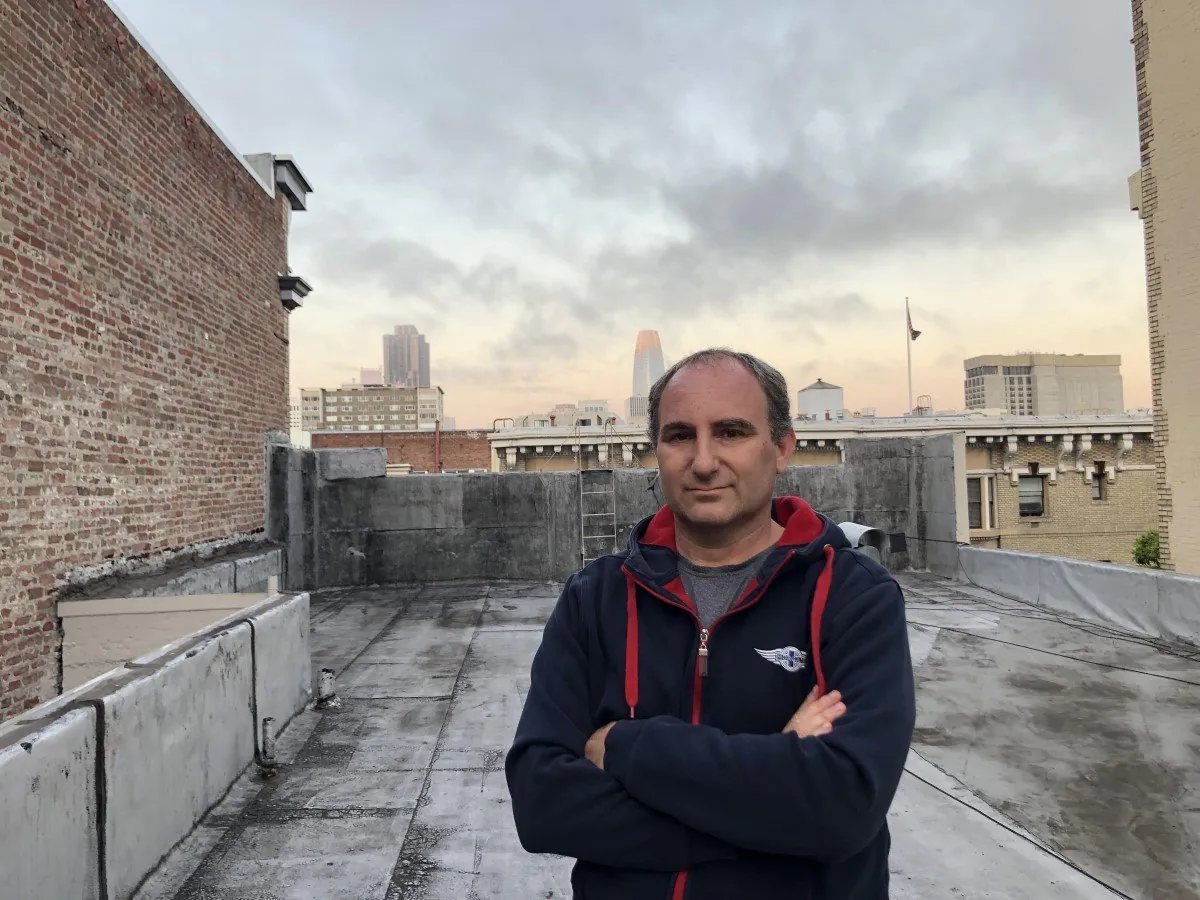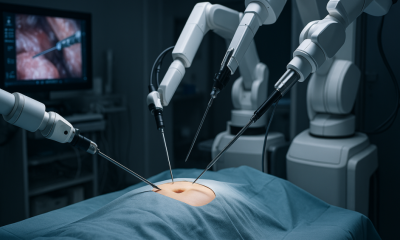Interviews
Adam Rodnitzky, COO & Co-Founder of Tangram Vision – Interview Series

Adam Rodnitzky, is the COO & Co-Founder of Tangram Vision, a company specializing in assisting robotic companies to integrate sensors quickly and maximize uptime.
What initially attracted you to Robotics?
I’ve always loved mechanical things, and I’ve always loved cutting-edge technology. Robots sit right at the intersection of those two interests. Beyond that foundation of what they are, however, is what they can do. For the longest time, robots were largely relegated to factory settings, where they worked under relatively constrained circumstances. That meant that for most, robots were something they knew about, but never experienced. It’s only been recently that robots have started to play a larger role in society, and that is largely because the technology required to let them operate safely and consistently in the human world is just now becoming viable. The future of robotics is being built as we speak, and the level of interaction between them and humans is going to grow exponentially in the next decade. I’m very excited to witness that.
You were a mentor at StartX a seed stage accelerator out of Stanford University for over a decade. What did you learn from this experience?
Being a company founder comes with a lot of uncertainty, as you face new challenges you’ve never faced, and try to pattern match on prior experience to make sense of the day-to-day realities of running a new company. Looking to mentors for guidance is a natural response to having that uncertainty. But there is a challenge in taking advice from mentors. Mentors will prescribe advice based on their own past experiences. Yet those experiences occurred in different contexts, at different company stages and for different reasons. As a mentor, you’ve got to remember this when giving advice. You may have the best intentions, but you might lead a company astray by not properly contextualizing advice based on past experience. I’ve tried to keep this in mind as I mentor companies at StartX.
You previously worked as a General Manager for Occipital which develops state-of-the-art mobile computer vision applications and hardware. Could you tell us what this role involved in a day to day setting?
When I was at Occipital, our core product was the Structure Sensor and SDK, which made it simple to add 3D sensing to mobile devices, and develop applications to take advantage of that 3D data stream. On a day-to-day basis, I saw my role as combining a short-term tactical and long-term strategic pursuit of revenue and revenue growth. For instance, the SDK was free, and therefore it generated no revenue on a daily basis. However, as developers used the SDK to create apps to use Structure Sensor, there was a direct relationship between the number of apps published on our platform and the rate of sensor sales. So on a daily basis, I’d pursue these indirect revenue opportunities around developer community support, while also setting up programs to sell our sensors in as many channels as possible – including directly through those developers.
When did you first get the idea to launch a robotics startup?
Much of the credit here goes to my co-founder, Brandon Minor. Brandon is a co-founder of Colorado Robotics, and has had his finger on the pulse of the robotics community as long as I have known him. We had both left Occipital independently with the idea of starting companies. Earlier this year, we met up and he proposed that we join forces to build on our past experience with robots, computer vision and sensors. And that is how Tangram Vision was created.
Could you tell us what Tangram Vision does?
Tangram Vision offers sensors-as-a-service to robotics platforms. All robots need perception sensors, but not all of those sensors meet the performance needs of robotics. We infuse trusted hardware with Tangram software that makes integration, calibration, and maintenance a breeze during development and deployment. This means that roboticists don't need to make any trade-offs; they can start using the best sensors for their platform from day one, and keep that momentum as they deploy.
What are some of the existing challenges companies face when it comes to the integration of Robotic Perception Sensors?
Our interviews with robotics companies of all types have led us to the conclusion that hardware companies make great hardware, but marginal software. The process of developing the right streaming and integration software for a sensor therefore falls to the robotics company themselves and can take months to get right. Not only that, but every robotics company is going through this same process, for the same sensors, over and over as they develop up their perception stack. This results in a major loss of engineering time and customer revenue. We’ve set up our solution so that it can help robotics companies at any stage, from design through development and ultimately to deployment.
Could you discuss Tangram Vision web-based diagnostics and monitoring systems?
Tangram understands that the key to improvement is in metrics, both during development and in the field. With that in mind, we are creating remote diagnostics systems that work on top of our integration software that allow robotics developers to better understand what's happening during operation. This includes data transmission rates, processing time, and metrics directly related to other aspects of our platform. Setting this up over a web portal means that decisions can be made competently without needing the physical presence of an engineer.
One of the solutions Tangram Vision is working on is developing full-stack tools for robotic companies to add to their project. Could you discuss the vision behind these tools?
Sensor integration is much more than streaming. We look at sensors from a holistic perspective, focusing on the tools needed to develop faster and work longer. This includes competent calibration tools that work in the field, as well as diagnostics and monitoring of data and performance. By solving the base requirements of many robot platforms out-of-the-box, Tangram's tools dramatically improve time-to-market. We anticipate that various other tools will be requested as our platform matures.
Is there anything else that you would like to share about Tangram Vision?
As we’ve gone through the process of talking with roboticists, we’ve been blown away at the diversity of applications that robotics companies are pursuing. We’ve spoken to companies building all sorts of wild solutions, from strawberry pickers to sous chefs to boat captains to groundskeepers!
Thank you for the interview. I believe that sensors is often something that is overlooked by different companies and I look forward to following your progress. Readers who wish to learn more should visit Tangram Vision.












